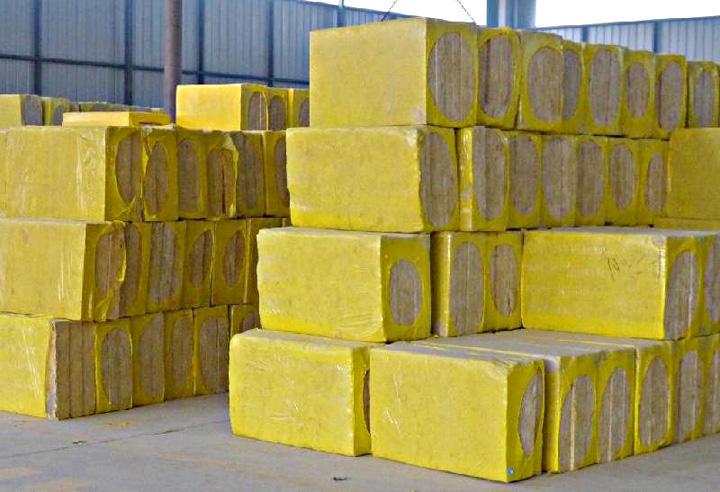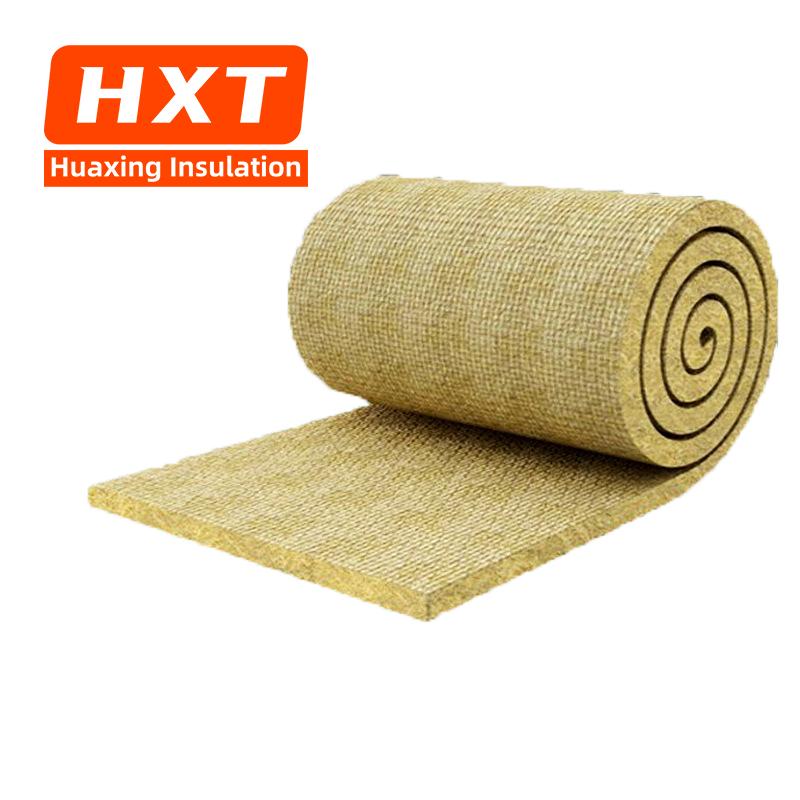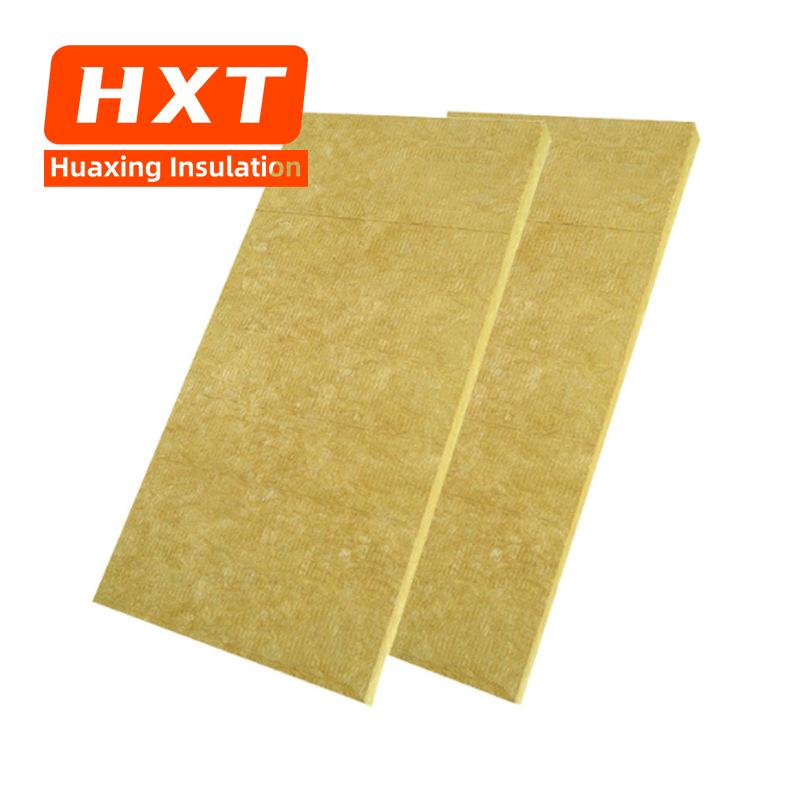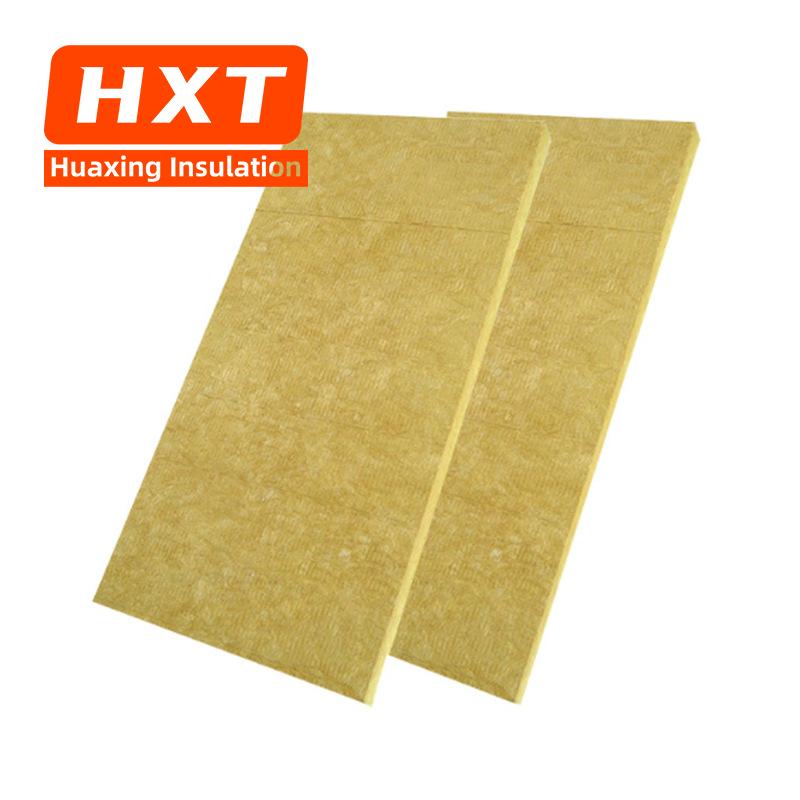Comprehensive Analysis of Rock Wool Board: Performance, Applications and Construction Guide
Blog 2025-06-06
**
In the vast field of building materials, rock wool boards have become the ideal choice for numerous construction projects due to their excellent performance and diverse applications. This article will delve deep into what materials rock wool boards are made of, and provide a detailed introduction to their characteristics, advantages, application scenarios, and construction key points, helping you gain a comprehensive understanding of this highly favored building material.
What are Rock Wool Boards Made of?
Rock wool boards, also known as rock wool thermal insulation decorative boards, mainly use basalt as the raw material. Through high-temperature melting technology, basalt is processed into inorganic fibers, and then formed into boards through a series of processes. This artificial inorganic fiber material was initially developed for use in industrial buildings, but now it has been widely applied in various construction fields. It also complies with the relevant regulations of Application Types and Basic Requirements of Building Thermal Insulation Materials.
Characteristics of Rock Wool Boards
Excellent Fire Resistance
Rock wool boards are commonly used and highly effective building fireproof materials in the market, and their fire resistance rating usually reaches Class A or Class A1. Made from natural volcanic rocks, they have the highest fire resistance rating, which can effectively prevent the spread of fire. During a fire, rock wool boards maintain stable dimensions, without elongation, shrinkage, or deformation. They exhibit excellent high-temperature resistance, with a melting point exceeding 1,000°C. Moreover, in case of a fire, they do not produce smoke, combustion droplets/fragments, nor release substances and gases harmful to the environment, thus buying precious time for personnel evacuation and fire rescue. They are the preferred thermal insulation materials for high-rise buildings, public buildings, and industrial plants with high fire protection requirements.
Superior Thermal Insulation Performance
Rock wool boards have slender and flexible fibers with a low slag ball content. This structural feature results in a low thermal conductivity, effectively blocking heat conduction and radiation, and providing excellent thermal insulation. In the hot summer, it can lower the indoor temperature, enhancing living comfort; in the cold winter, it can prevent heat loss, keeping the indoor warm. This greatly reduces the operating burden of air conditioning and heating systems, cuts down energy consumption, and saves energy costs for users. For example, the thermal conductivity of Rockfon multifunctional rock wool boards ranges from 0.035 – 0.045W/mK, showing outstanding performance in heat conduction blocking and effectively maintaining stable indoor temperatures.
Remarkable Sound Absorption and Noise Reduction Effect
Rock wool boards are ideal sound insulation materials. The porous connection structure formed by a large number of slender fibers endows them with excellent sound absorption and noise reduction performance. In modern urban life, with the increasing problem of noise pollution, the use of rock wool boards can effectively block the transmission of external noise and create a quiet and comfortable environment. For instance, the sound insulation of light steel keel partitions built with Rockfon rock wool boards can reach over 45 – 60 decibels, providing a good audio experience for places such as homes, schools, hospitals, recording studios, studios, and cinemas.
Good Hydrophobic and Anti-Moisture Properties
Hydrophobic rock wool products can have a hydrophobic rate of up to 99.9%, with an extremely low water absorption rate and no capillary penetration. Even in environments with high relative humidity, the volume moisture absorption rate is less than 0.2%. Tested according to the ASTMC1104 or ASTM1104M methods, the mass moisture absorption rate is less than 0.3%. It can effectively resist water penetration and accumulation, and can be used for building parts with moisture-proof requirements and thermal insulation and fire protection in humid environments, such as vehicles, mobile equipment, cold storage projects, air conditioning ducts, etc.
Stable Chemical Properties, Safe and Environmentally Friendly
Rock wool has stable chemical properties, with a pH value of 7 – 8, showing neutral or slightly alkaline characteristics, and it does not corrode metal materials such as carbon steel, stainless steel, and aluminum. Tests have shown that rock wool does not contain asbestos, CFC, HFC, HCFC, and other substances harmful to the environment. It will not be corroded, nor will it develop mildew or bacteria. It has been recognized as a non-carcinogenic substance by authoritative international cancer research institutions, which is in line with the policy orientation of green environmental protection.
Advantages of Rock Wool Boards
High Energy Efficiency
Rock wool boards have a low thermal conductivity. For example, the thermal conductivity of Knauf Insulation rock wool is 0.034W/m.K, which greatly improves energy-saving effects. The lower the thermal conductivity of the thermal insulation material, the better the thermal insulation effect. Using rock wool boards can effectively reduce the energy consumption of buildings, meeting the requirements of energy conservation and environmental protection. At the same time, rock wool is a recyclable resource, which improves the material utilization rate.
Strong Durability
Rock wool boards, made from basalt, dolomite, and other main raw materials through high-temperature melting, have an extremely long service life. They are not prone to sagging and settlement. The stone fibers in the cotton have natural air cavities, which keep the material breathable and prevent water accumulation. Moreover, the melting of basalt at high temperatures can eliminate organic substances, preventing the growth of mold, mildew, and fungi, thus helping to extend the service life of the material.
Easy Installation
As a thermal insulation material, rock wool boards are dense, hard, and have high rigidity, making them easier to install compared to many other types of thermal insulation materials. They can be precisely cut and accurately trimmed around power outlets and other obstacles. Meanwhile, rock wool materials come in various forms, such as rock wool blanket, rock wool pipe shell, and rock wool board, and can be cut into various shapes and sizes as needed. Compressed rigid rock wool boards can also be purchased, facilitating installation. For example, loose-filled rock wool can effectively insulate attics and ceilings.
Application Scenarios of Rock Wool Boards
Building Thermal Insulation Field
- External Wall Insulation: Special external wall thermal insulation rock wool boards are designed specifically for building external wall insulation systems and are suitable for buildings with dense structures such as concrete or brick walls. While providing thermal insulation and noise reduction, they have high compressive and tensile strength, good stability, and can be well-compatible with the external wall system. They have a long service life, basically the same as that of the building.
- Roof Insulation: Special roof rock wool boards integrate fire protection, noise reduction, and thermal insulation. They have good hydrophobic and moisture-proof properties, as well as good compressive strength and stability. They do not corrode metals, making them an ideal choice for various waterproof roof systems.
- Floor Insulation: It can be used for floor insulation, effectively preventing heat loss through the floor and improving indoor thermal insulation, especially suitable for buildings in cold regions.
Industrial Heat Insulation Field
- High-Temperature Furnace Linings: The high-temperature resistance of rock wool boards allows them to be used in high-temperature furnace linings. They can withstand high-temperature environments, protect the furnace body, reduce heat loss, and improve energy utilization efficiency.
- Thermal Pipeline Insulation: Used for thermal pipeline insulation, it can effectively reduce heat loss inside the pipelines, lower energy consumption, and protect the pipelines from the external environment, extending the service life of the pipelines.
Sound Absorption Field
- Noise Control: In noise control projects, rock wool boards can be used to build sound barriers, effectively absorbing and blocking traffic noise, industrial noise, etc., improving the acoustic quality of the surrounding environment.
- Indoor Sound Insulation: In indoor places such as homes, schools, and offices, rock wool boards can be applied to partitions, ceilings, etc., reducing indoor noise interference and creating a quiet space environment.
Other Applications
- Marine Field: Marine rock wool boards are used for thermal insulation and fire partitions of ships, effectively improving the safety and comfort of ships and meeting the usage requirements of ships in complex marine environments.
- Cold Storage Projects: Hydrophobic rock wool boards are used in cold storage projects. Their good thermal insulation and moisture-proof properties can ensure the stability of the low-temperature environment inside the cold storage, reduce cold loss, and prevent structural damage and mold growth caused by moisture.
Construction Key Points of Rock Wool Boards
- Pre-construction Preparations: Before construction, an energy-saving and thermal insulation special construction plan should be prepared according to the design and relevant technical standards, and technical disclosure and professional technical training should be carried out for construction personnel. Materials must be accepted, qualified, and stored in the warehouse according to specifications, quantity, and quality requirements upon arrival. They should be kept by a dedicated person, and curtain wall rock wool boards need to be stacked off the ground to prevent moisture. At the same time, the base wall, its cement mortar leveling layer treatment, and embedded parts installation should be completed. Construction tools and labor protection supplies required should be fully prepared. The special construction scaffolding should be firmly built and pass the safety inspection. The spacing between the vertical and horizontal bars of the scaffolding and the wall and corners should meet the construction requirements. The base wall should be solid and flat, with a dry surface, free from cracks, 空鼓 s, looseness, or efflorescence. The bonding strength, flatness, and verticality of the cement mortar leveling layer should meet the quality requirements of ordinary plastering projects in Code for Quality Acceptance of Building Decoration Works GB50210.
- Construction Environment Requirements: During the external wall external insulation construction of rock wool boards, construction is not allowed when the temperature of the base and the construction environment is lower than 5°C. Construction is prohibited in windy weather above Grade 5 and in rainy or snowy weather. During and after construction, effective measures should be taken to prevent rainwashing and exposure to the hot sun, and protective layers should be made in a timely manner. For example, if it rains during construction, measures should be taken to prevent rain from washing the walls; anti-freezing measures should be taken according to relevant standards during winter construction.
- Construction Technology
- Adhesive Method: The adhesive method for rock wool boards is preferably the strip adhesive method or the dot adhesive method, and the adhesive area should not be less than 50%. After applying the adhesive, the lower end of the thermal insulation board should be adhered to the base first, laid horizontally from bottom to top, and anchored while laying. The board joints should fit tightly naturally, and the gap between the boards should not be greater than 2mm. If the gap width is 2mm, it should be filled with thermal insulation materials. The adjacent board surfaces should be flush, and the height difference between the boards should not be greater than 1.5mm.
- Rendering Layer Construction: After the rock wool boards are adhered, the plastering surface of the boards should be treated. Use a stainless – steel trowel to apply the rendering adhesive mortar (thickness 1 – 1.5mm) to the entire surface and press it into the surface fibers of the rock wool boards. The rendering adhesive mortar should be prepared strictly in accordance with the product instruction manual. The prepared adhesive should avoid direct sunlight and be used up within 2 hours. The rendering layer is constructed in two layers. The thickness of the first layer of rendering adhesive mortar is 2 – 3mm. First, apply the mortar with a stainless – steel serrated trowel, then level it with a large trowel, and press the glass fiber mesh into it while the mortar is still wet. Install the anchor 固件 when the mortar is slightly dry and hard enough to be touched, and seal the plastic disc of the anchor 固件 and its surrounding area with the rendering adhesive mortar; the second layer of rendering adhesive mortar construction can be carried out when the first layer of rendering adhesive mortar is slightly dry, with a thickness of about 2mm, and level it to make the thickness of the rendering layer meet the design requirements. The laying of the mesh should be smoothed, straightened, and the squareness and verticality of the internal and external corners should be maintained. There should be lap joints in both the vertical and horizontal directions of the mesh, and the lap width should not be less than 100mm; the glass fiber mesh should not be directly laid on the surface of the rock wool board, nor should it be exposed, and dry lap joints are not allowed. The installation of the anchor 固件 should be carried out at the positions required by the design. Drill holes with an impact drill or electric hammer, and the drilling depth should be 10mm greater than the anchoring depth. Knock or screw the anchor nails into the wall during installation, make the disc close to the first layer of the mesh, and cover the disc and its surrounding area with the rendering adhesive mortar in a timely manner.
- Construction Precautions: During the construction process, pay attention to rain prevention, and do not construct in rainy days. When used for cold insulation, a moisture – proof layer needs to be added. In extremely low – temperature conditions, use resin – free rock wool for thermal insulation, and its moisture – proof layer must also be fireproof. When the temperature exceeds 200°C, a suitable outer protection needs to be added to prevent changes in the thickness and bulk density of the rock wool board. For thermal insulation of large – diameter and flat – wall equipment using rock wool products, when the temperature exceeds 200°C, thermal insulation nails (with a spacing of about 400mm) need to be added, and the outer protection should be tightly attached. For equipment, thermal insulation nails, and pipelines that need thermal insulation, appropriate coatings can be applied to facilitate anti – corrosion, and it should be ensured that there is no leakage. When rock wool board products are used for outdoor thermal insulation and are vulnerable to mechanical wear, it is advisable to use metal or plastic sheathing. Pay attention to the sealing of joints and seams, and add rubber seals if necessary. The overlapping part of the sheathing should be no less than 100mm. When the insulated object is placed at a 90 – degree angle and has a certain height, the thermal insulation layer of the rock wool board should have positioning pins or support rings, with a spacing of no more than 3 meters, to prevent the thermal insulation materials from sliding downward during vibration. To minimize heat loss, the joints of rock wool boards and blankets should be tightly butted. In multi – layer thermal insulation, the cross joints should be staggered to avoid forming thermal bridges. When used for cold insulation, cold bridges must be eliminated.
With its excellent fire resistance, thermal insulation, sound absorption, hydrophobic properties, as well as the advantages of easy installation, durability, and environmental friendliness, rock wool boards play an important role in multiple fields such as construction and industry. During the construction process, strictly following the construction key points and precautions can ensure that rock wool boards perform at their best, providing reliable guarantees for construction projects. Whether for new buildings or energy – saving renovations of existing buildings, rock wool boards are a trustworthy and high – quality building material.



